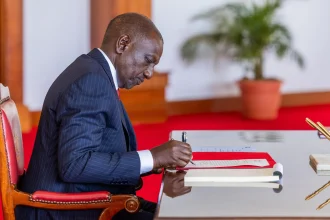Kenya’s Counties are poised for another financial reshuffle as the Senate considers a new revenue-sharing formula for the 2025/2026 to 2029/2030 financial years.
The fourth basis for revenue allocation, proposed by the Commission on Revenue Allocation (CRA), will determine how the 47 county governments share national funds over the next five years. This decision will significantly impact the delivery of essential services and development projects across the nation.
The Senate of Kenya is seeking public input on this proposed fourth basis for revenue sharing amongst Kenya’s 47 county governments. This formula, reviewed and adopted every five years, dictates how counties receive their share of the national budget.
At the heart of this debate is whether the new parameters favour populous counties over geographically vast but sparsely populated regions. The formula allocates 42 per cent of the allocation to population size, making it the most significant factor. Consequently, counties such as Nairobi, Kiambu, Nakuru, and Kakamega—which have large populations—are likely to receive the largest share of funds.
Balancing Equity and Development
The inclusion of an equal share (22 per cent) ensures that every county, regardless of size or population, receives a baseline allocation. However, counties with vast land areas, such as Turkana, Marsabit, and Wajir, will rely heavily on the 12 per cent allocation based on geographical size to maintain services in remote areas.
Furthermore, the formula attempts to reduce economic disparities, allocating 14 per cent based on poverty levels and 13 per cent on income distance. This means poorer counties—especially in northern Kenya, parts of the coast, and western regions—could benefit from additional funding to bridge economic gaps. For instance, these funds could be directed towards infrastructure projects, healthcare improvements, and educational initiatives.
Stay updated with our weekly newsletter. Subscribe now to never miss an update!
Potential Winners and Losers
Given these parameters, certain Counties are poised to benefit more than others.
Likely Winners:
- Highly populated counties: Nairobi, Kiambu, Nakuru, Kakamega, Bungoma. These counties, due to their large populations, will receive a substantial portion of the funds.
- Counties with high poverty levels: Mandera, Turkana, Samburu, West Pokot. These counties will benefit from the increased funding allocated to areas with higher poverty rates.
Likely Losers:
- Low-population but developed counties: Lamu, Nyandarua, Elgeyo Marakwet. These counties may see a reduction in funding due to their smaller populations.
- Wealthier counties with smaller income disparities: Mombasa, Kajiado, Nyeri. These counties may receive less funding as they have smaller income disparities compared to the national average.
A Political and Economic Debate Ahead
The formula will now undergo public scrutiny, with the Senate’s Standing Committee on Finance and Budget set to receive memoranda from stakeholders until 3rd April 2025. This period of public input is crucial, and the debate is expected to be intense, with governors and county leaders lobbying to ensure their regions do not lose out.
As the Senate deliberates, the key question remains: Can this formula strike the right balance between fairness and development needs? Or will it exacerbate existing economic inequalities between Counties? The coming weeks will reveal whether counties unite behind the formula or if political tensions emerge over funding allocations.
Why Is This Formula Important?
- Ensures fair distribution of national resources across all counties.
- Supports marginalised and underdeveloped regions to promote national equity.
- Encourages counties to use funds efficiently for development and service delivery.
- Aligns with constitutional requirements for revenue sharing (Article 217 of the Kenyan Constitution).
The formula is now open for public input, and the Senate’s Finance and Budget Committee will consider feedback before finalising the revenue-sharing model.












